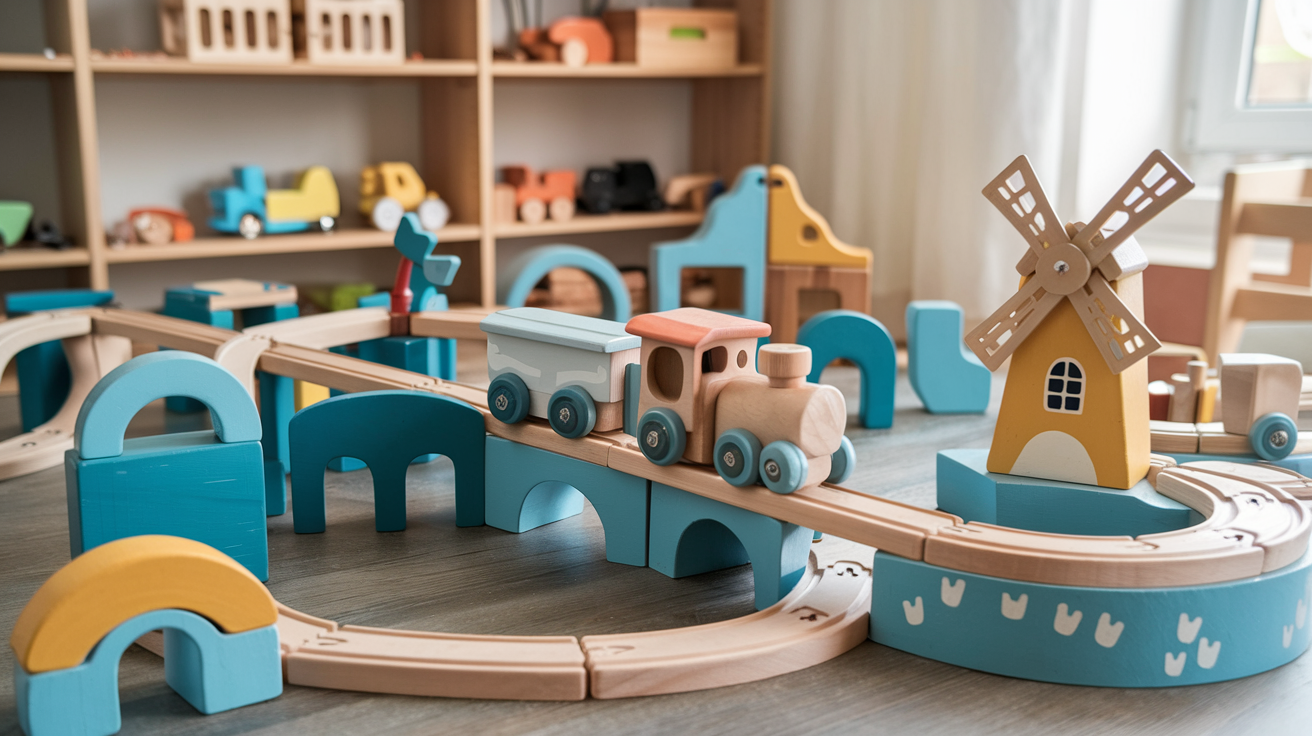
In an age dominated by high-tech gadgets and plastic playthings, wooden toys are experiencing a remarkable resurgence. Parents and educators alike are turning to these timeless play items for their many benefits, from their durability and sustainability to their ability to foster creativity and developmental growth in children. This article explores why wooden toys have regained their popularity, their advantages over other materials, and how they can contribute to a child’s holistic development.
A Brief History of Wooden Toys
Wooden toys have been a fixture in children’s playrooms for ages. Ancient civilizations, such as the Egyptians and Greeks, crafted simple wooden figures and puzzles for amusement and education. Over time, those toys evolved, becoming more intricate and versatile, often serving as miniature versions of tools, vehicles, and animals.
By the 19th and 20th centuries, those toys were familiar in households worldwide. However, their popularity waned with the advent of plastic and electronic toys in the mid-20th century. However, wooden toys have endured, standing the test of time due to their classic appeal and inherent benefits.
The Unique Appeal of Wooden Toys
1. Durability and Longevity
One of the standout qualities of wooden toys is their durability. Unlike plastic toys that may crack or electronic ones that can stop functioning, These toys are built to last. High-quality wooden toys often become cherished heirlooms passed down through generations.
2. Eco-Friendly and Sustainable
These toys are a greener alternative to plastic toys, contributing significantly to environmental pollution. Many manufacturers now prioritize using sustainably sourced wood, ensuring their production processes are environmentally responsible. Additionally, wooden toys are biodegradable, making them an eco-conscious choice for parents.
3. Aesthetic Appeal
There’s an undeniable charm to the natural look and feel of wooden toys. Their smooth textures and warm tones provide a sensory experience that plastic toys often lack. Many parents also appreciate their minimalist design, which complements modern home decor while avoiding the overwhelming sensory input of brightly colored plastic toys.
The Developmental Benefits of Wooden Toys
1. Encouraging Creativity and Imagination
These toys often come without preset functions, batteries, or sounds, leaving the play mode entirely up to the child. This open-ended nature encourages imaginative play, helping children develop problem-solving skills and creativity. For instance, a simple set of wooden blocks can transform into a castle, a car, or even a spaceship in a child’s hands.
2. Promoting Fine Motor Skills
Manipulating wooden toys helps children refine their fine motor skills. For example, picking up, stacking, and balancing wooden blocks requires precision and coordination. These activities aid in developing hand-eye coordination and spatial awareness.
3. Enhancing Cognitive Skills
Wooden puzzles, shape sorters, and counting toys are excellent tools for cognitive development. They introduce children to basic concepts like shapes, numbers, and patterns, laying the groundwork for mathematical and logical reasoning.
4. Fostering Social Interaction
Many of these toys are intended for collaborative play. Whether building a tower together or playing pretend with wooden food sets, these toys encourage communication, teamwork, and sharing.
Wooden Toys vs. Plastic Toys
While plastic toys have their place in the market, they often fall short compared to the benefits of wooden toys. Plastic toys are typically cheaper but lack the durability and sustainability of their wooden counterparts. Furthermore, many plastic toys contain harmful chemicals like phthalates and BPA, raising safety concerns.
These toys, however, are non-toxic and safe for children. They’re also less likely to overstimulate children with excessive noise, flashing lights, or vivid colors. This simplicity allows children to focus on the joy of play rather than being distracted by unnecessary features.
Choosing the Right Wooden Toys
When selecting these toys for your child, consider the following factors:
- Age Appropriateness: Make sure the toy matches your child’s developmental stage. For infants, opt for simple rattles or teething rings. Preschoolers might enjoy building blocks or simple puzzles.
- Quality of Material:s Look for toys made from solid, untreated wood. Avoid products with sharp edges or those painted with toxic finishes. Reputable brands often provide safety certifications to guarantee their products meet child safety standards.
- Versatility: Select toys that can be used in many ways. For example, wooden blocks can be stacked, sorted, or used in imaginative scenarios.
- Educational Value: Opt for toys that promote learning, such as alphabet blocks or counting beads. These toys can double as teaching tools, making playtime fun and educational.
Popular Types of Wooden Toys
- Building Blocks A classic choice, wooden blocks are perfect for open-ended play. They let children experiment with balance, symmetry, and engineering principles.
- Wooden Puzzles Available in various designs and difficulty levels, puzzles enhance problem-solving skills and hand-eye coordination.
- Pretend Play Sets From wooden kitchen sets to miniature trains, these toys stimulate imaginative role-playing and storytelling.
- Musical Instruments: Wooden xylophones, drums, and maracas introduce children to the joy of music while aiding in sensory development.
- Pull-Along Toys These toys are great for toddlers learning to walk. They improve gross motor skills and encourage physical activity.
Caring for Wooden Toys
Proper maintenance ensures that wooden toys remain in excellent condition for years. Here are some tips:
- Cleaning: Wipe down wooden toys with a moist towel and mild soap. To avoid warping, don’t immerse them in water.
- Storage: To avoid cracking or fading, keep these toys dry, away from direct sunlight.
- Inspection: Regularly check for splinters or damage, especially on older toys, to ensure they remain safe for play.
Why Parents and Educators Prefer Wooden Toys
Parents and educators increasingly favor these toys because they align with Montessori and Waldorf educational philosophies. Both approaches emphasize hands-on, exploratory learning, which wooden toys naturally support. Their simplicity allows children to engage more deeply with the task, promoting concentration and independent thinking.
The Future of Wooden Toys
As sustainability becomes a priority for many families, These toys will likely grow in popularity. Innovations in design and manufacturing continue to make them more accessible and appealing. Additionally, the rising awareness of plastic toys’ environmental and health risks further cement wooden toys as a preferred choice for conscious parents.
Conclusion
Wooden toys are far more than nostalgic playthings; they are a sustainable, durable, and enriching alternative to modern plastic and electronic toys. Their ability to foster creativity, enhance developmental skills, and promote eco-friendly practices makes them valuable to any child’s playroom. As parents and educators recognize their benefits, These toys will remain a cherished staple in childhood play for generations.
These toys are here to stay, continuing to captivate children and adults with their timeless appeal. By incorporating wooden toys into playtime, families can enjoy a blend of tradition, education, and environmental responsibility. As the demand for sustainable and high-quality playthings grows, wooden toys will remain a top choice for future generations.


